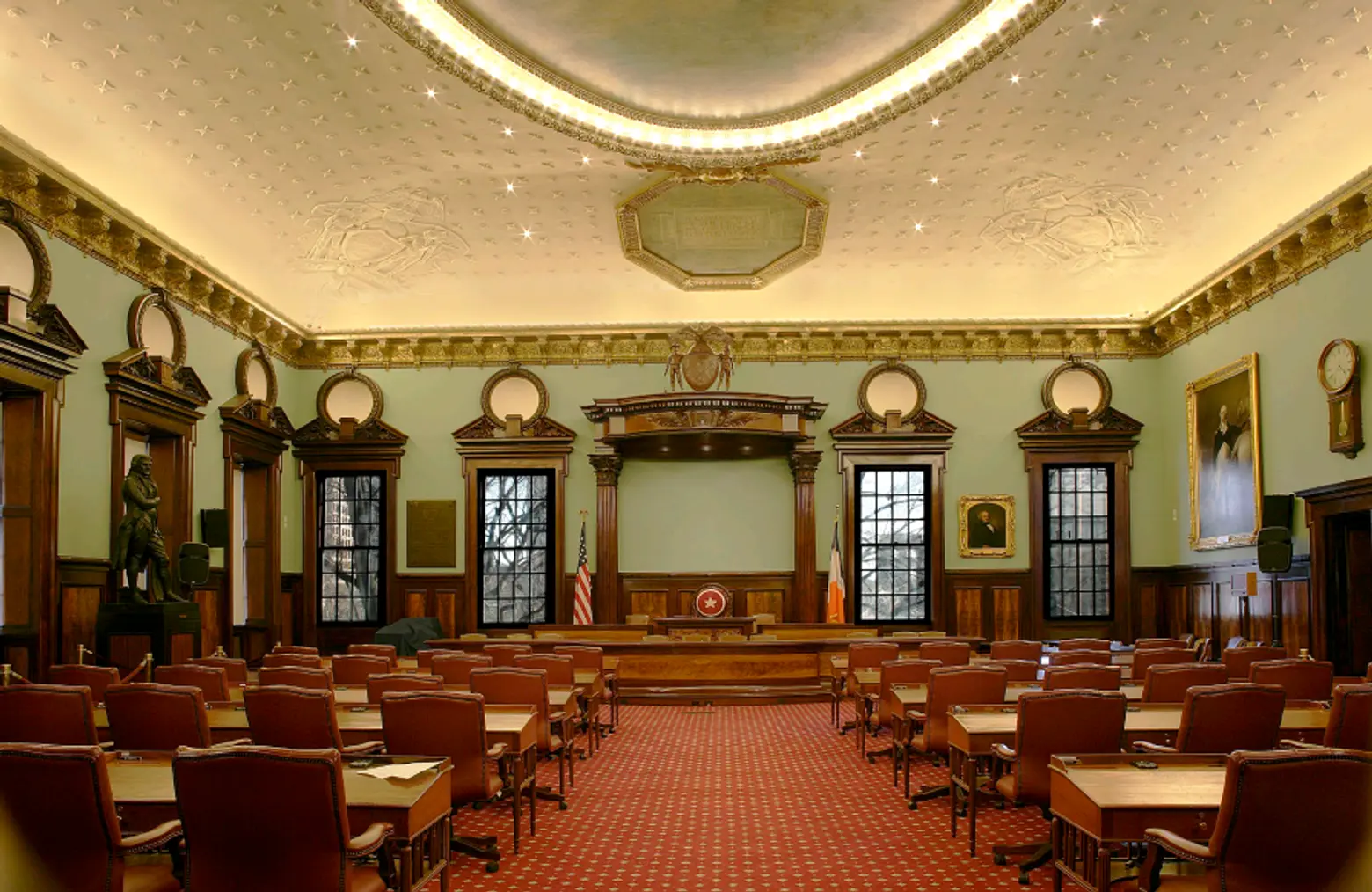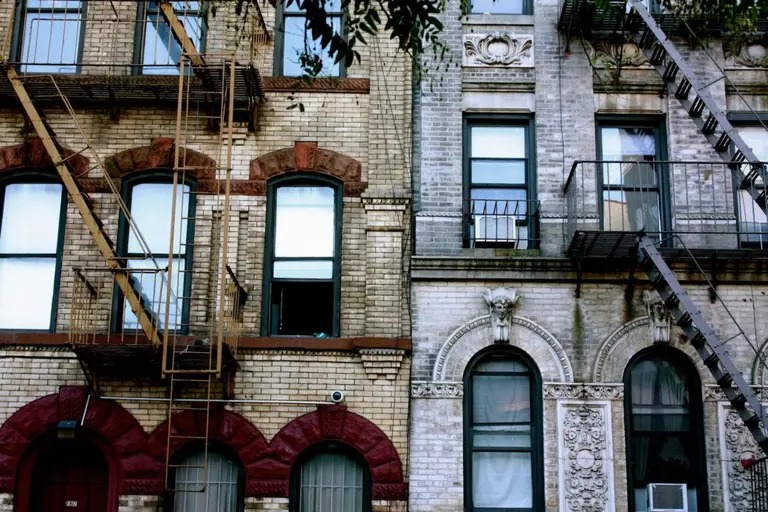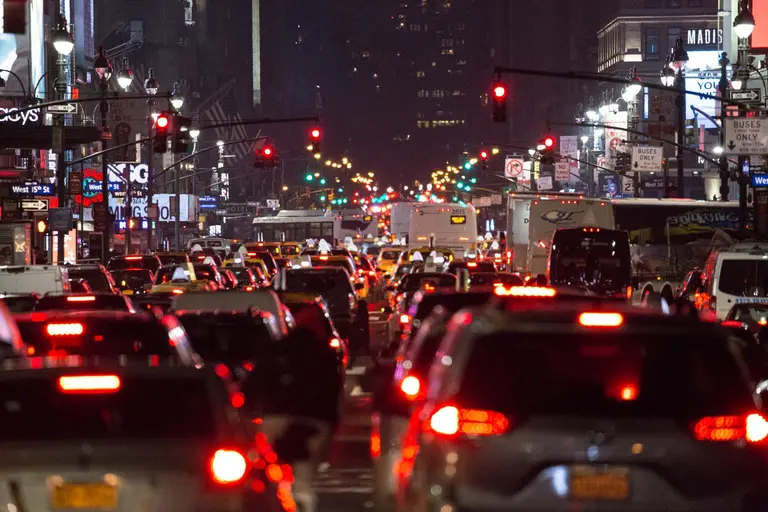Thomas Jefferson statue will be removed from NYC Council chambers but new location undecided

Photo by Glenn Castellano. Courtesy of NYC Public Design Commission
A 7-foot-tall statue of Thomas Jefferson will be removed from the New York City Council’s legislative chambers after residing there for nearly 100 years. The city’s Public Design Commission voted on Monday to take down the statue from the chambers but did not decide where it should be relocated. Calls to remove the statue of Jefferson, who owned more than 600 slaves, first came about two decades ago but intensified in recent years as more attention was paid to memorials and monuments honoring racists and racist symbols.
Uriah Phillips Levy, a prominent New Yorker and officer in the U.S. Navy, commissioned French artist Pierre-Jean David Dangers in 1833 to create a statue of Jefferson. The bronze statue was given to Congress as a gift and it remains on display in the Capitol Rotunda today.
Levy donated the plaster model from the artwork to the people of New York and the statue was installed in City Hall’s Governors Room in 1834. It later moved to the City Council Chambers in 1915, where it has remained since.
The New-York Historical Society agreed to display the statue as part of a long-term loan and pledged to exhibit it “within an educational and historical context,” according to a presentation given to the commission.
Signe Nielsen, the present of the Commission, said the artwork should remain publicly accessible, with its new location debated more thoroughly.
“It is a piece of public art and it is under our jurisdiction,” Nielsen said during a public hearing on Monday. “We need to be thoughtful of where it might go.”
The vote on Monday by the commission removes the statue from the chamber but does not loan it to the New-York Historical Society. The statue could even be relocated to another location in City Hall. The commission said it will determine an appropriate location for the statue by the end of the year.
The council’s Black, Latino, and Asian Caucus expressed disappointment in the commission’s decision. “As City Council Members of color, we deserve dignity and respect,” Council Member Adrienne Adams, who co-chairs the caucus, said. “We deserve monuments that inspire us to fight for equality, fairness, and justice for all New Yorkers.”
In a statement released after Monday’s vote, the caucus said: “The failure of the PDC to immediately recognize the symbolism of acting decisively to expel his likeness from Council Chambers in order to demonstrate its appreciation for the overriding need to amend the historical record of America’s founding so that it accurately reflects the roots of its origins in the original sin of human slavery is an affront to the entire city.”
The group added: “We along with our allies will continue to press the need for swift action to remove the indelible stain of Thomas Jefferson’s sordid history of human bondage–and its influence on his successors in purging the civilizations of our indigenous peoples–from the confines of the People’s House in this day and age.”
In June, the PDC approved plans to remove the Theodore Roosevelt statue from the steps of the American Museum of Natural History and relocate it to a cultural institution. No additional plans or details about the cultural institution have been announced since.
Unveiled on the city-owned steps of the museum in 1940, the Equestrian Statue of Theodore Roosevelt features the former president on horseback flanked by a Native American figure and an African figure, both located physically lower than the president. Activists have opposed the hierarchical composition of the statue for decades and have called it racist.
Mayor Bill de Blasio in 2017 convened the Mayoral Advisory Commission on City Art, Monuments, and Markers after a white supremacist protest in Virginia over plans to remove the statue of Robert E. Lee resulted in the death of Heather Heyer. At the time, the panel concluded the statue of Roosevelt did not have to be removed or relocated but required additional context.
The museum opened the “Addressing the Statue” exhibition to explore the history of the statue and examine the racial hierarchy depicted. Calls for the removal of the statue were revived following the murder of George Floyd in 2020 last summer.
The panel recommended relocating the statue of J. Marion Sims, who experimented on enslaved Black women, from Central Park, but keeping the statue of Christopher Columbus at Columbus Circle.
RELATED:


























